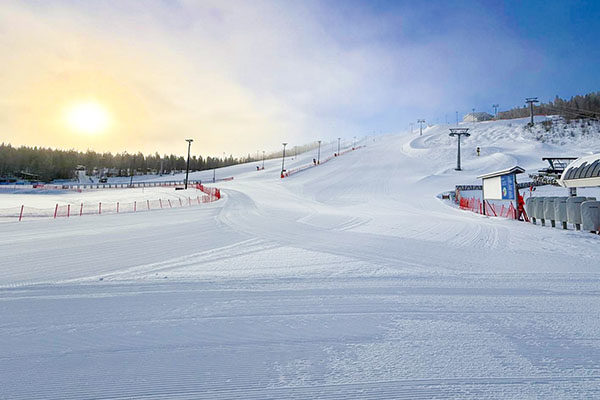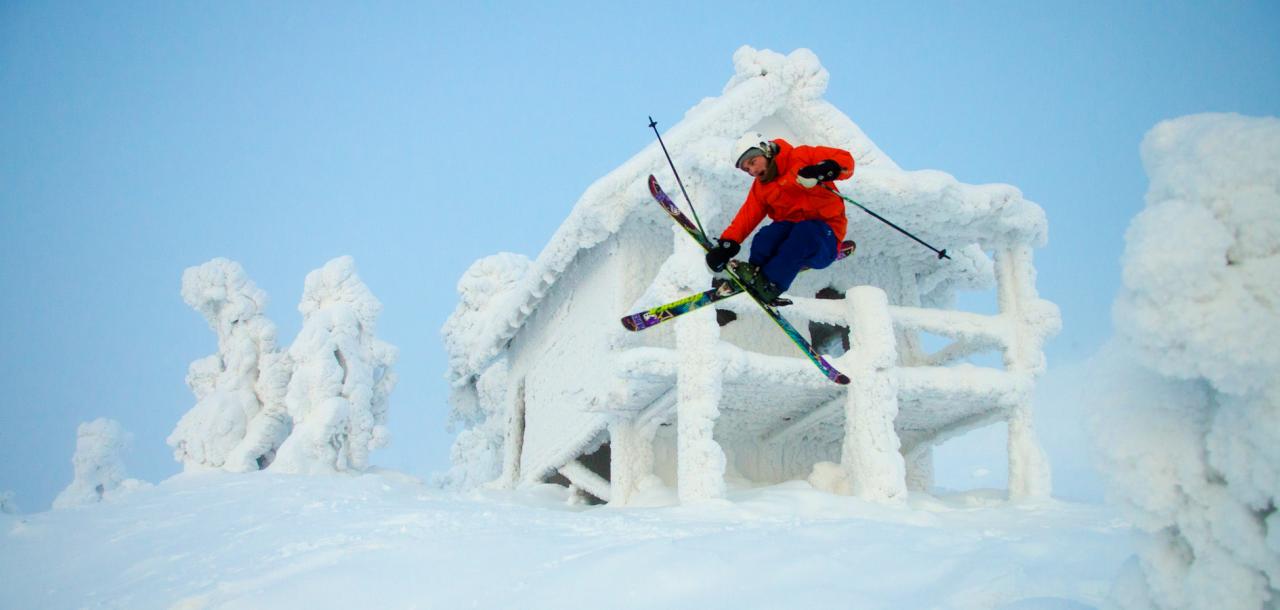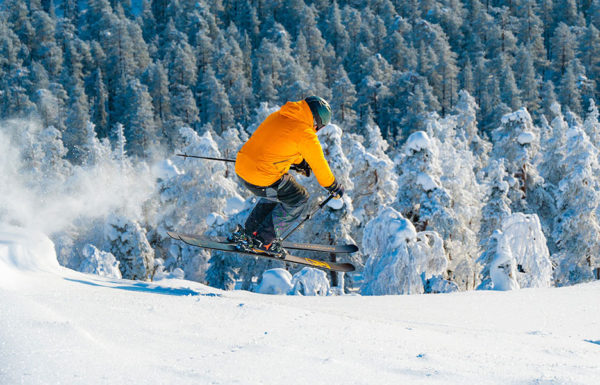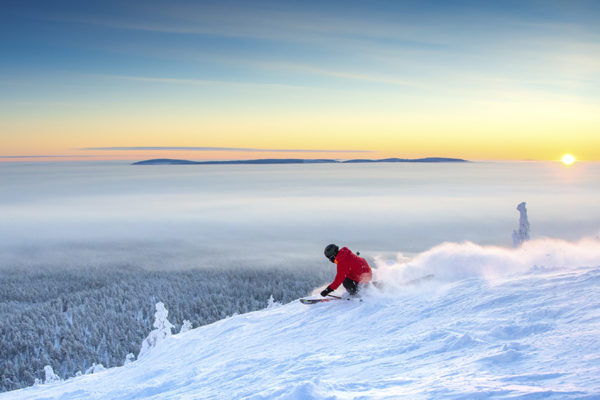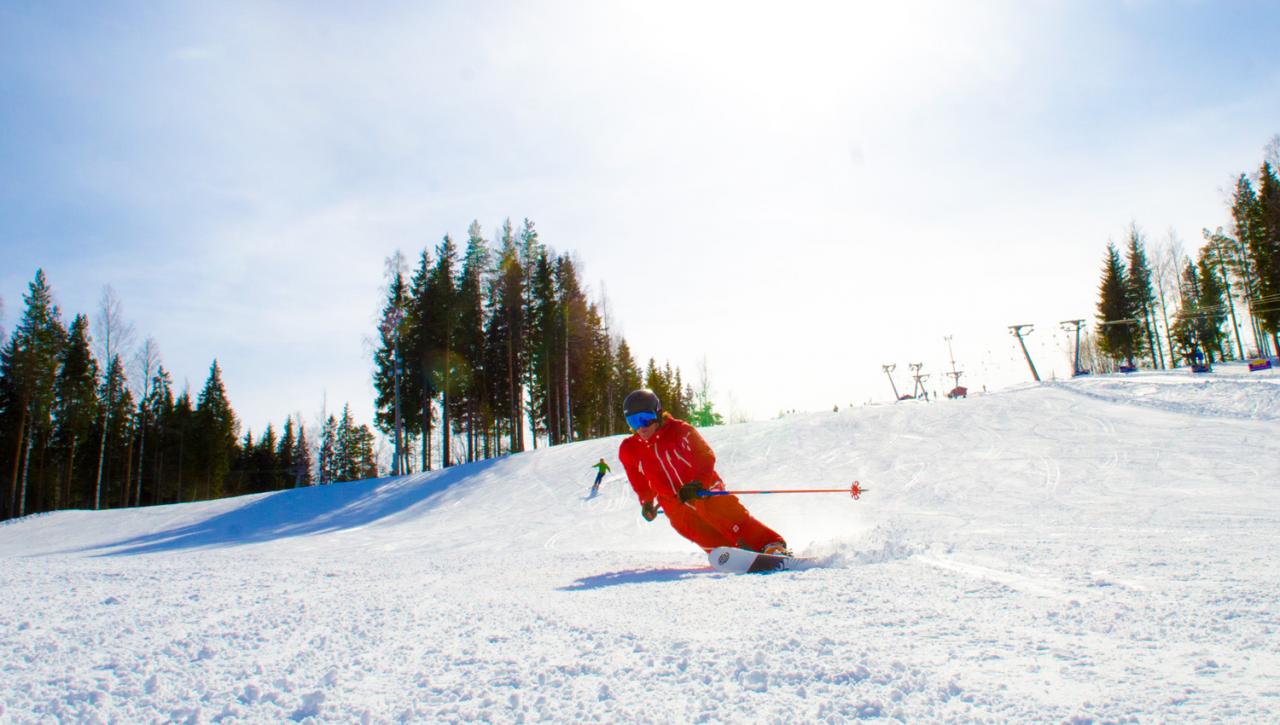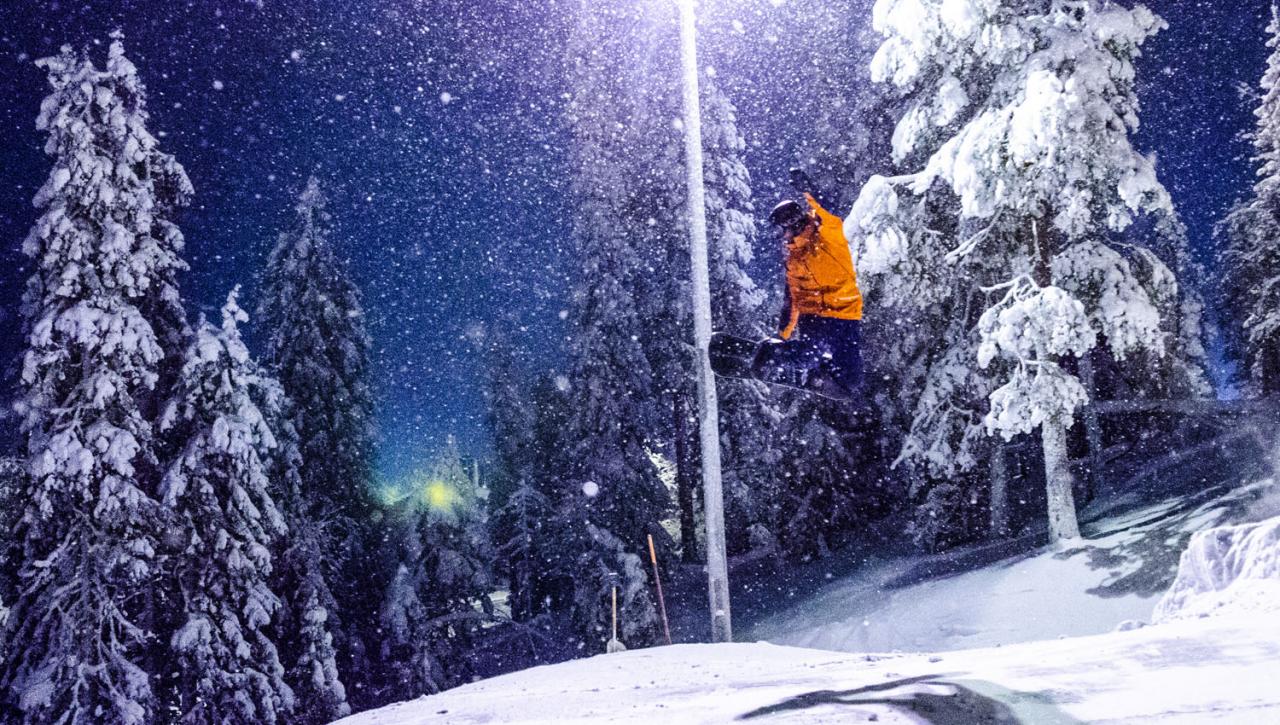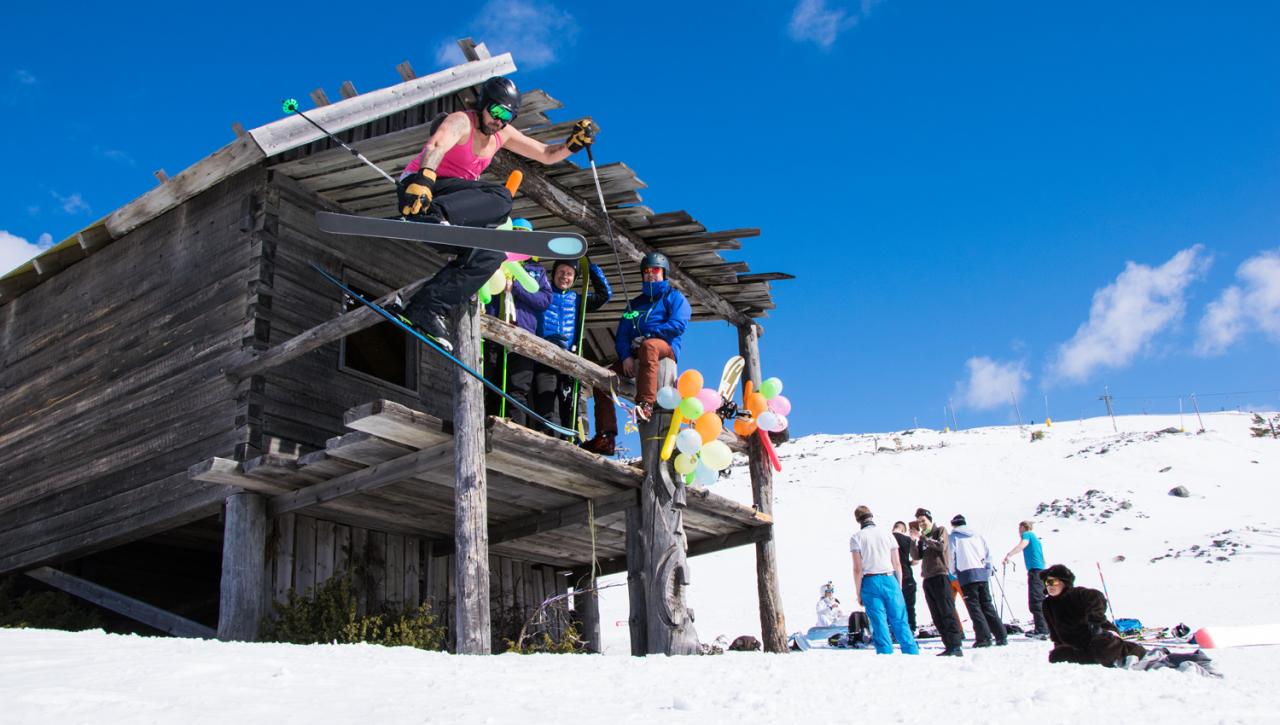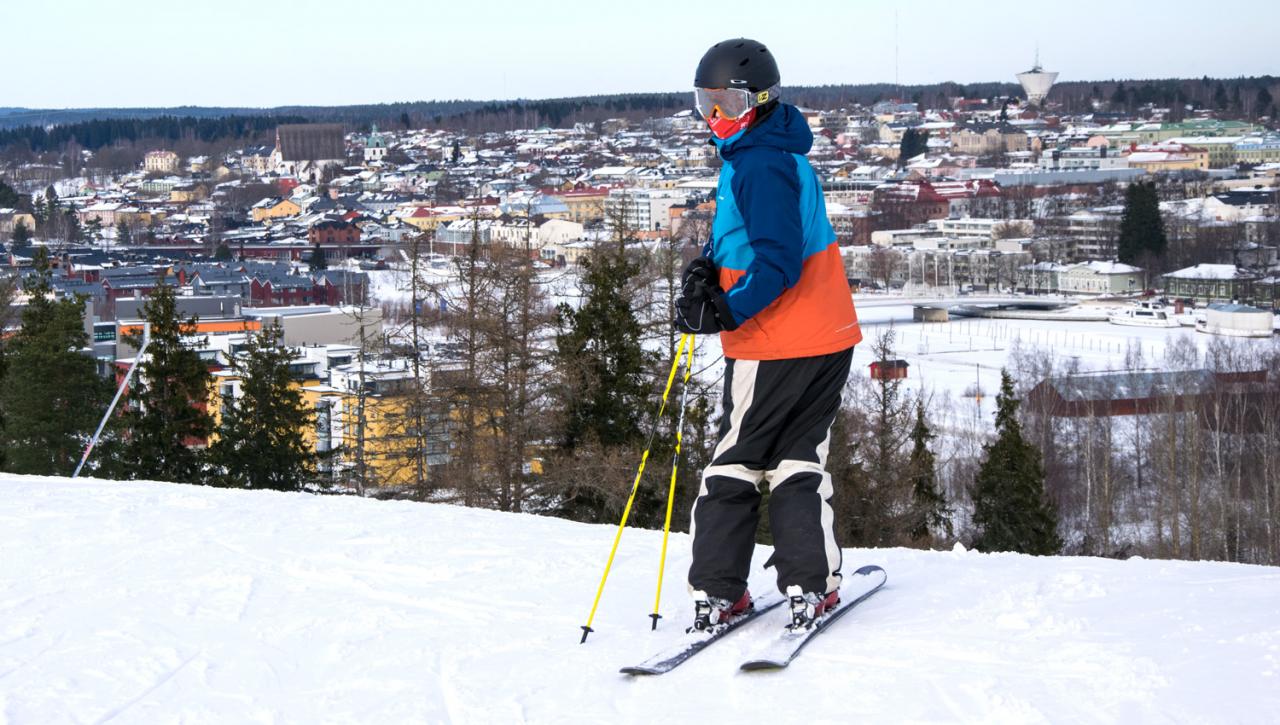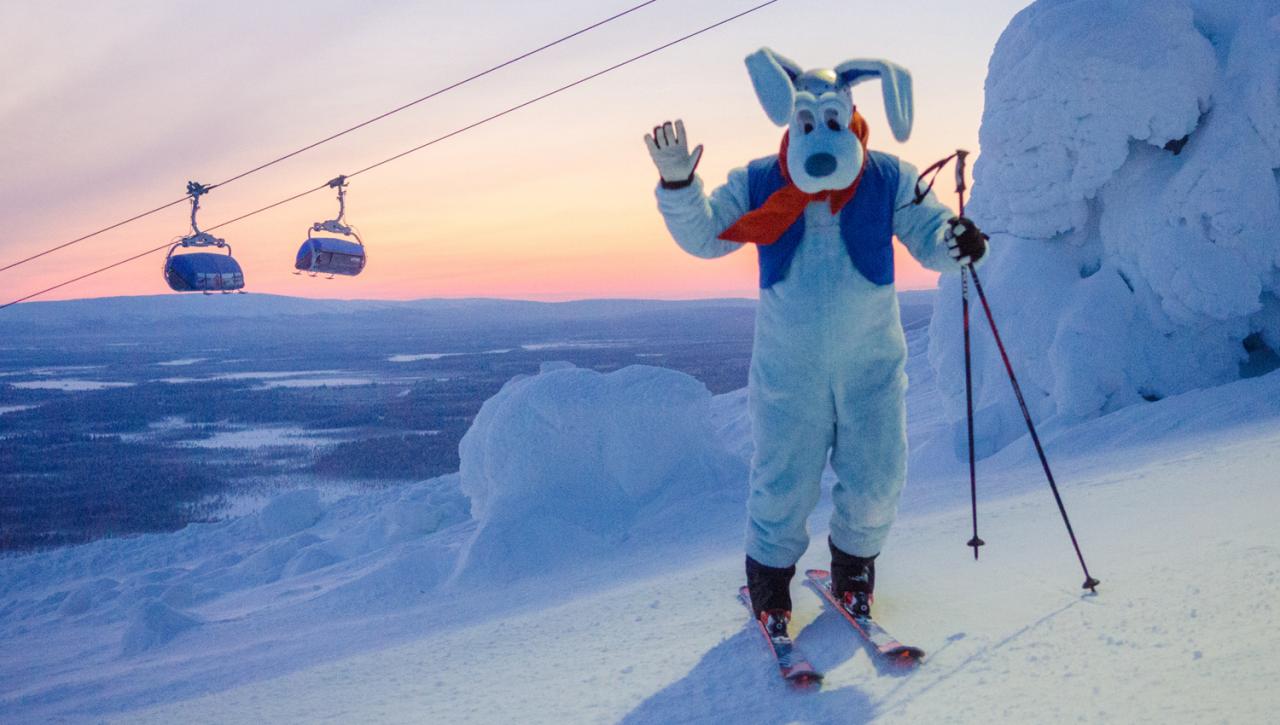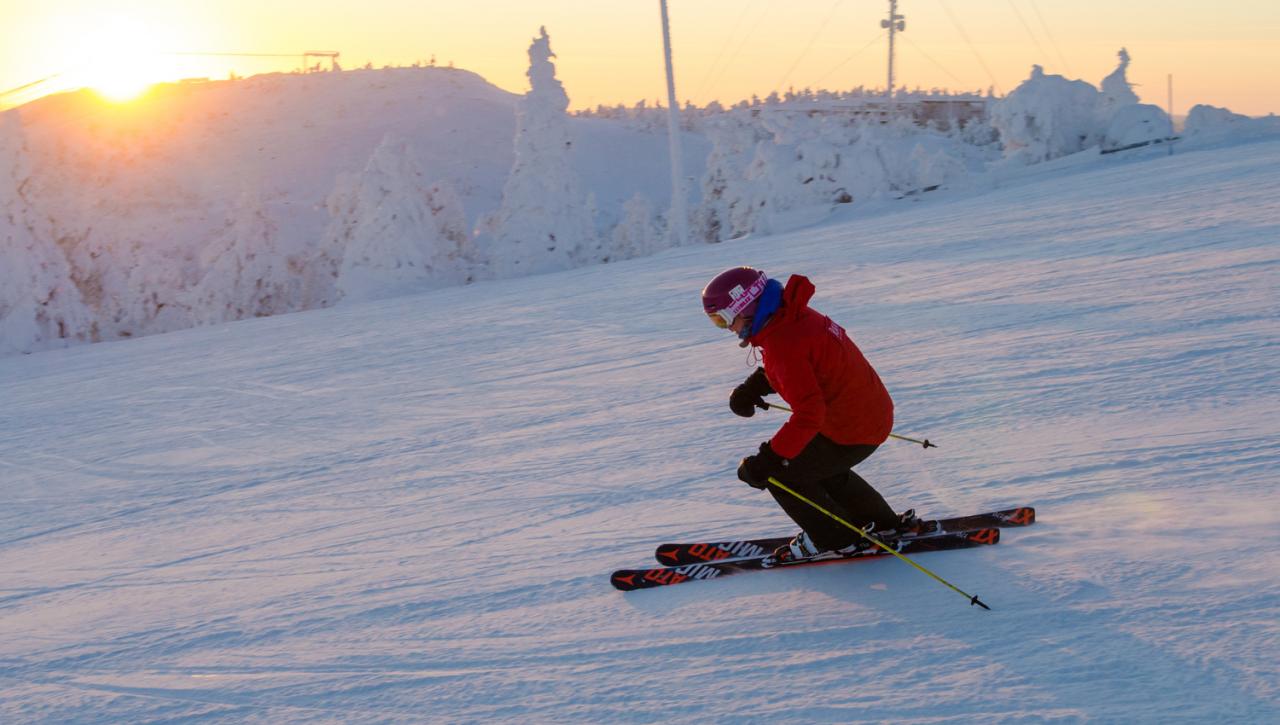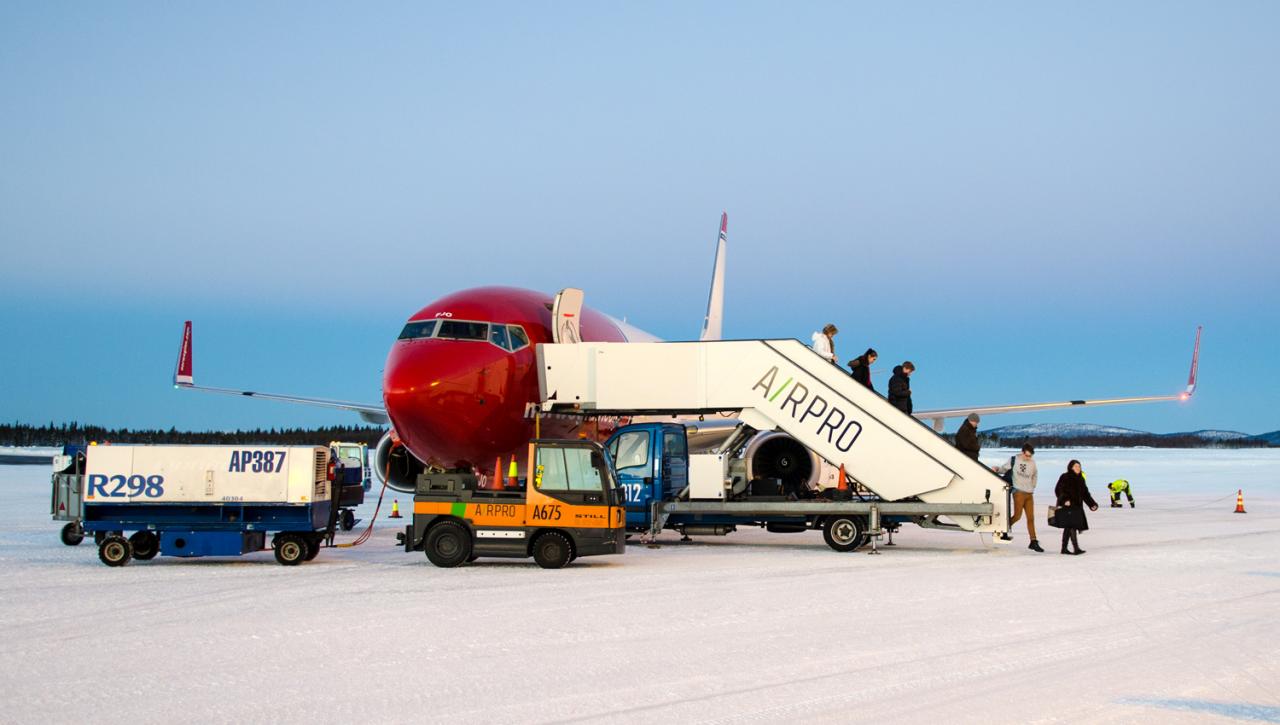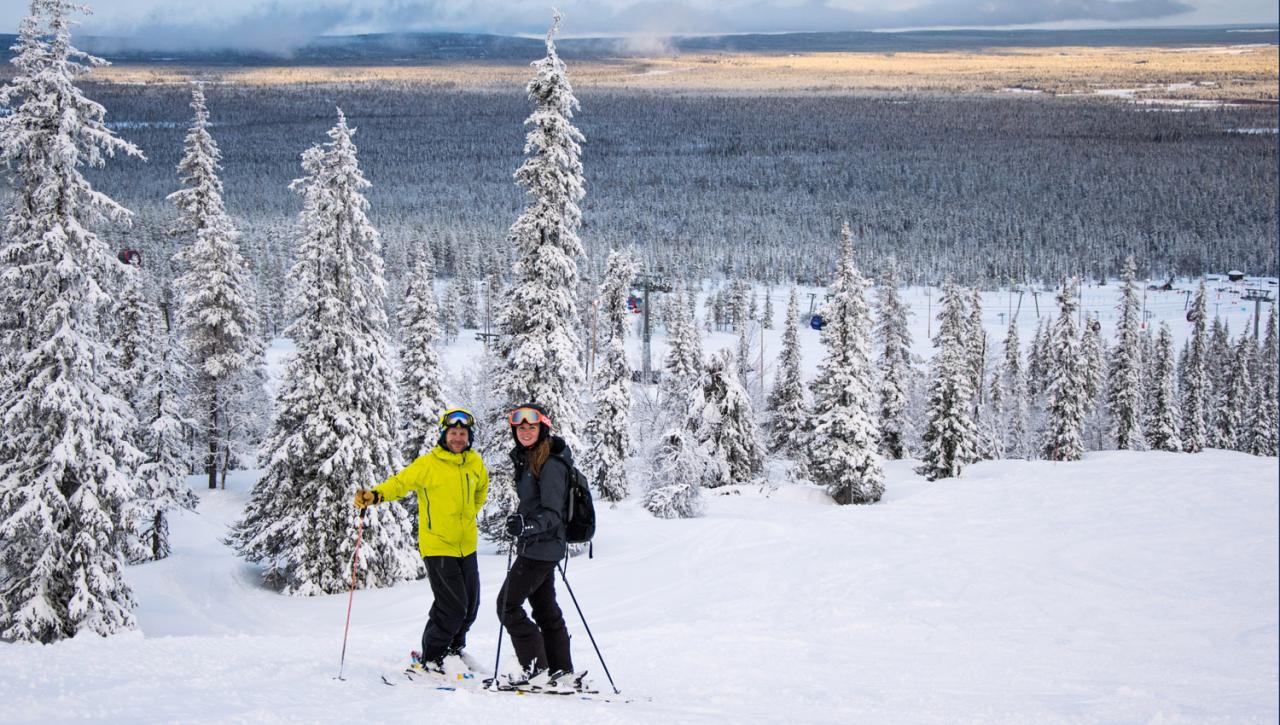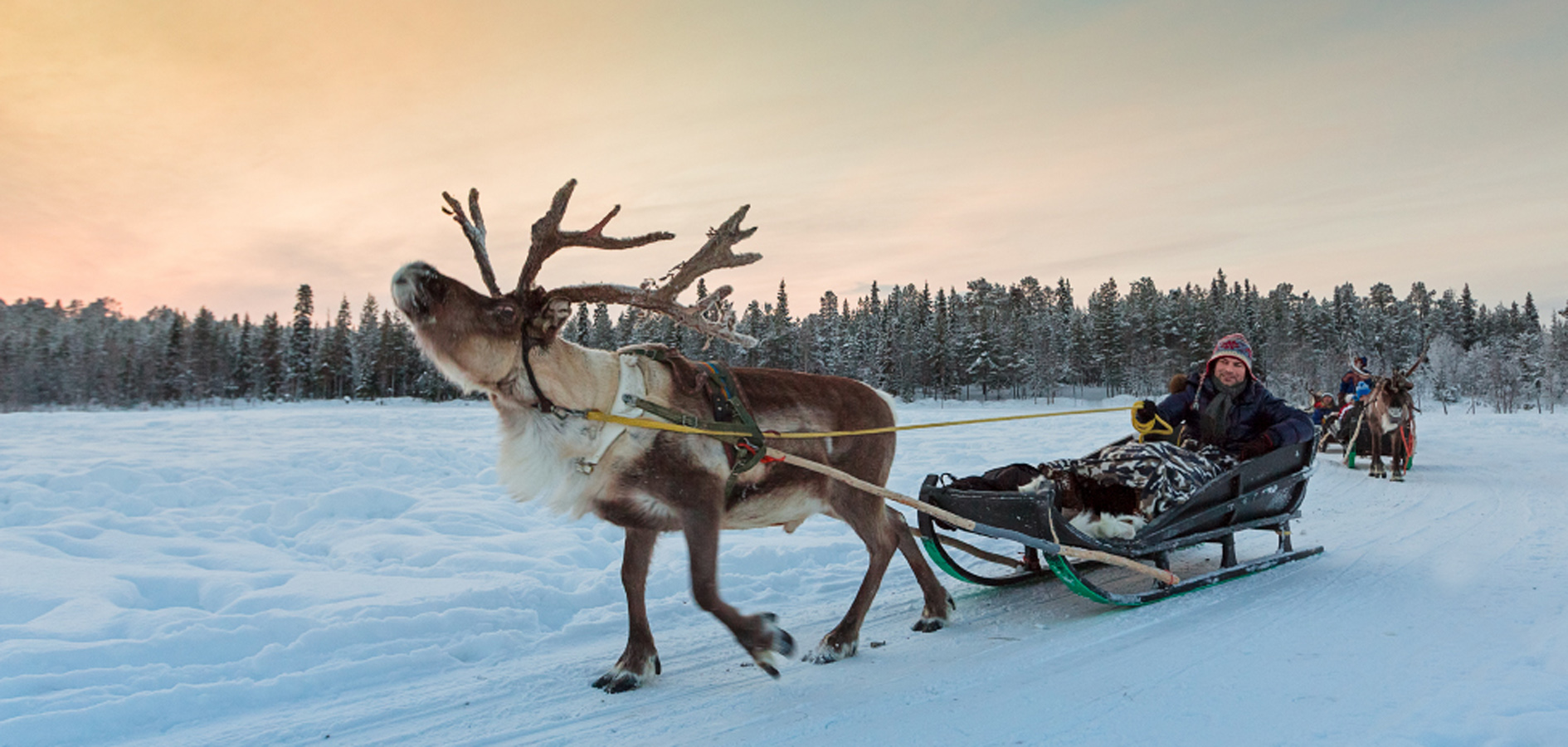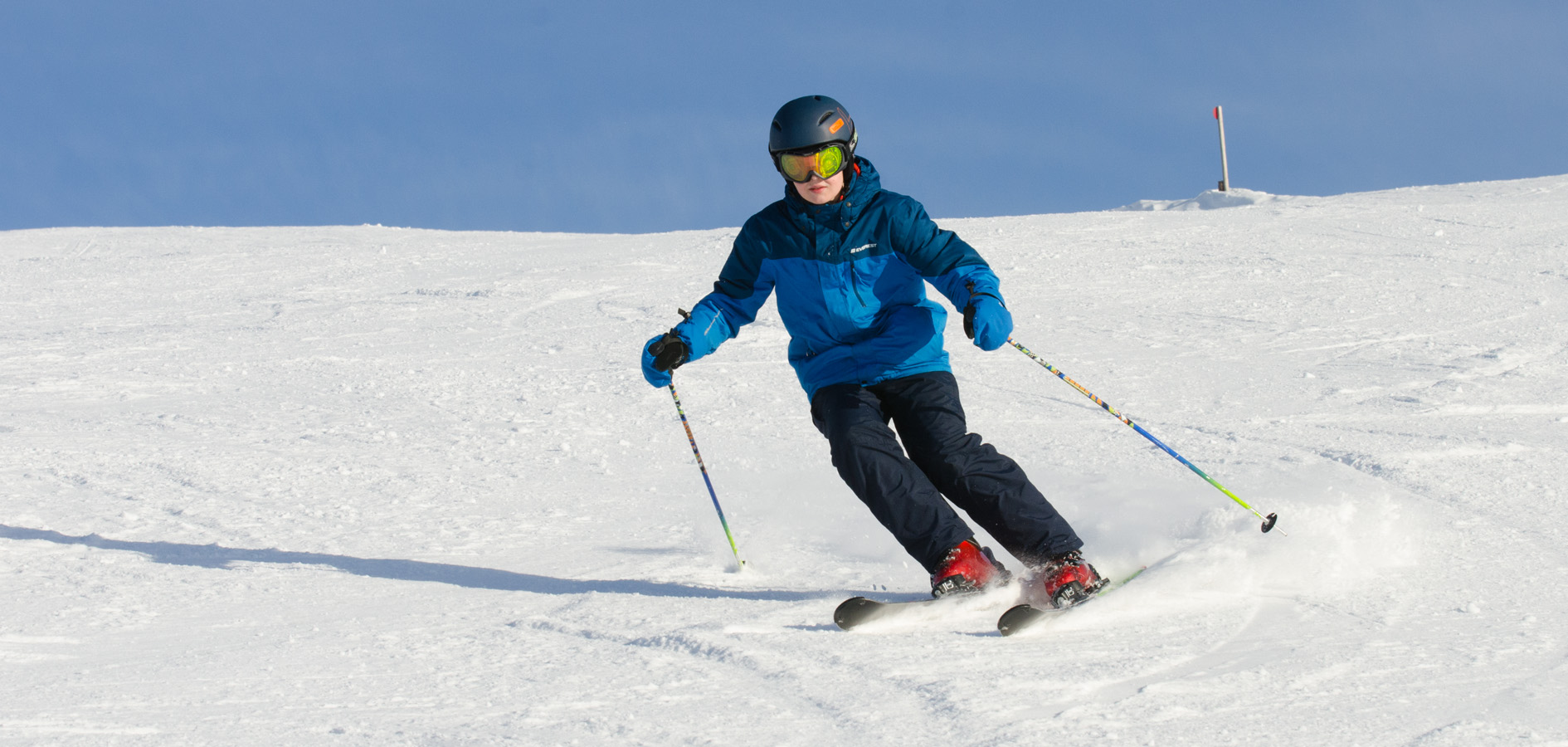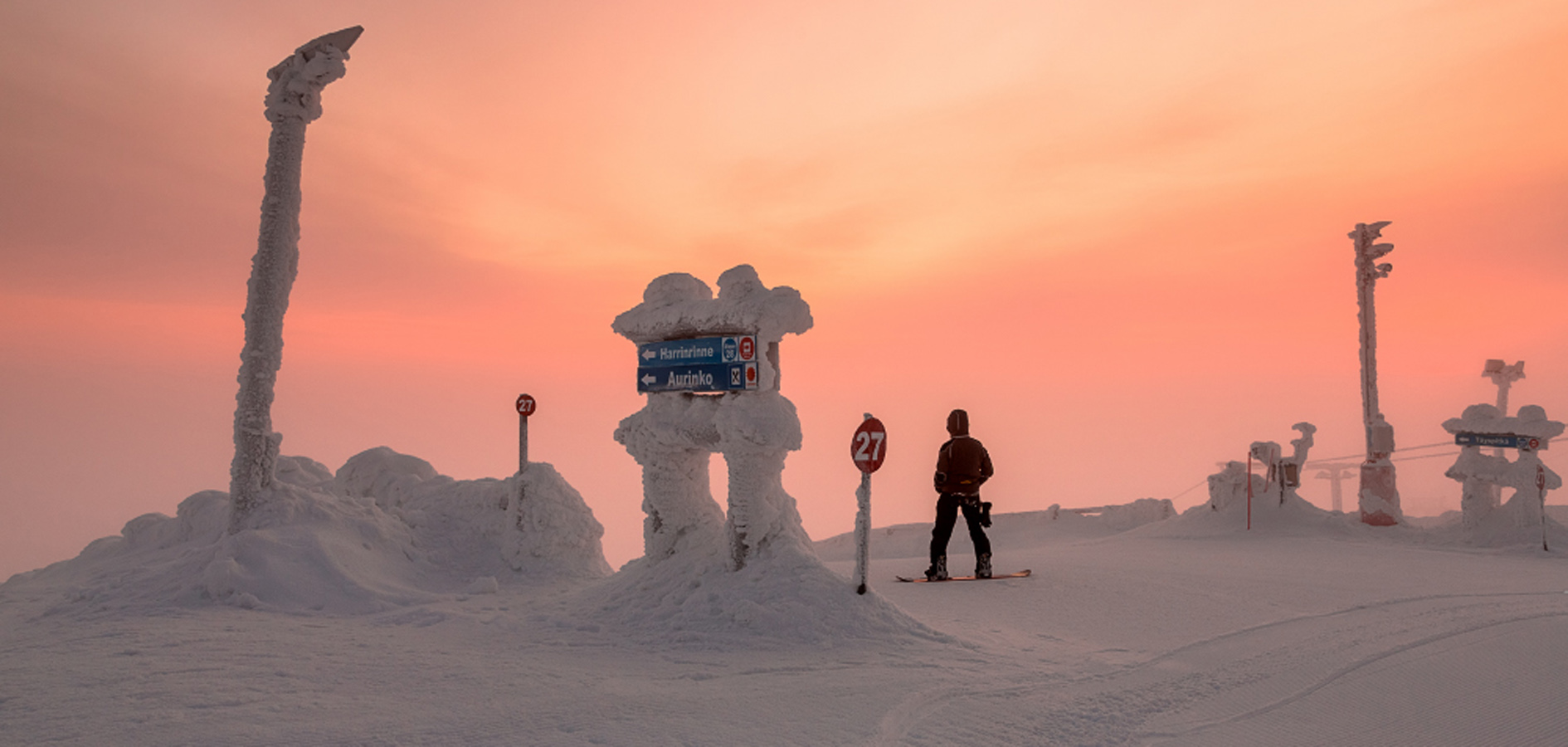There are a lot of differences in heat production between people, so take these instructions as pieces of advice. One rule of thumb to keep in mind is that cotton kills. Clothes made of cotton should not be used at all in cold weather due to its moisture-storing properties.
Keep your head warm
A helmet is always by far the best headwear in the slopes – it protects your head from bumps, wind and frost. When it gets really cold, you can wear either a merino wool tube scarf or a helmet hood that warms also the neck under the helmet. Ski goggles protect eyes. If necessary, put some cream that won’t freeze to protect the remaining bare skin. In a severe frost, wear a covering mask that protects your face.
Remember layering
The first layer is the undergarment next to skin. Its most important task is to keep the skin dry. Technical and highly breathable materials, such as merino wool underwear that also offer breathability in addition to the comfort of the heat, are a good option. The intermediate layer on top of the first transfers moisture from the inside to the outside and keeps you warm. Many good options, such as fleece, softshell and merino wool knits in the intermediate layer are provided. You can certainly find a well fitting and good-looking options among them.
There are a lot of choice also for the outerwear that is the third layer. Peel clothing protects against wind and rain, and will remove the moisture from inside the suit. Modern insulated jackets with lining fluff or modern synthetic fibers will also give protection from rain and wind. Jackets and trousers made of modern fabrics are a favourite choice for many amateur skiers. Due to the increased technical properties, these materials are used by an increasing number of professionals too.
The feet need to be dry and clean
Feeling cold often begins in the feet. Before you start getting dressed, make sure your feet are clean and dry. Boots must also be dry. In cold weather, put first a pair of sheer silk and on top of it a pair of ski socks that are designed for cold weather. Technology also provides help for keeping you warm, for example battery-powered socks and insoles that are available in several different models.
Protect the fingers
Fingers, too, are a sensitive part of your body and might freeze easily. The hands are attached to the ski poles on the slopes, so the blood circulation does not work correctly. For choosing the right gloves, keep in mind that mittens are warmer than gloves. A pair of thin gloves may also bring some extra warmth. In addition, a variety of disposable heat pads and battery-powered heaters are available.
When you wear correct clothes, skiing goes smoothly even in –30 degrees. Taking breaks every now and then is a great way to stay warm. During the breaks, you should take off your coat and put it to dry and warm up. Also, taking off ski boots or at least opening the buckles will warm your toes.
The modern ski clothes enable you to adjust air circulation as well as finding the perfect fit. Taking a look at the properties your skiing garnement have is worth doing in advance. Take a moment to do this because even surprisingly little things, such as waist rope tension can have great impact for cold intrusion inside the clothes.
